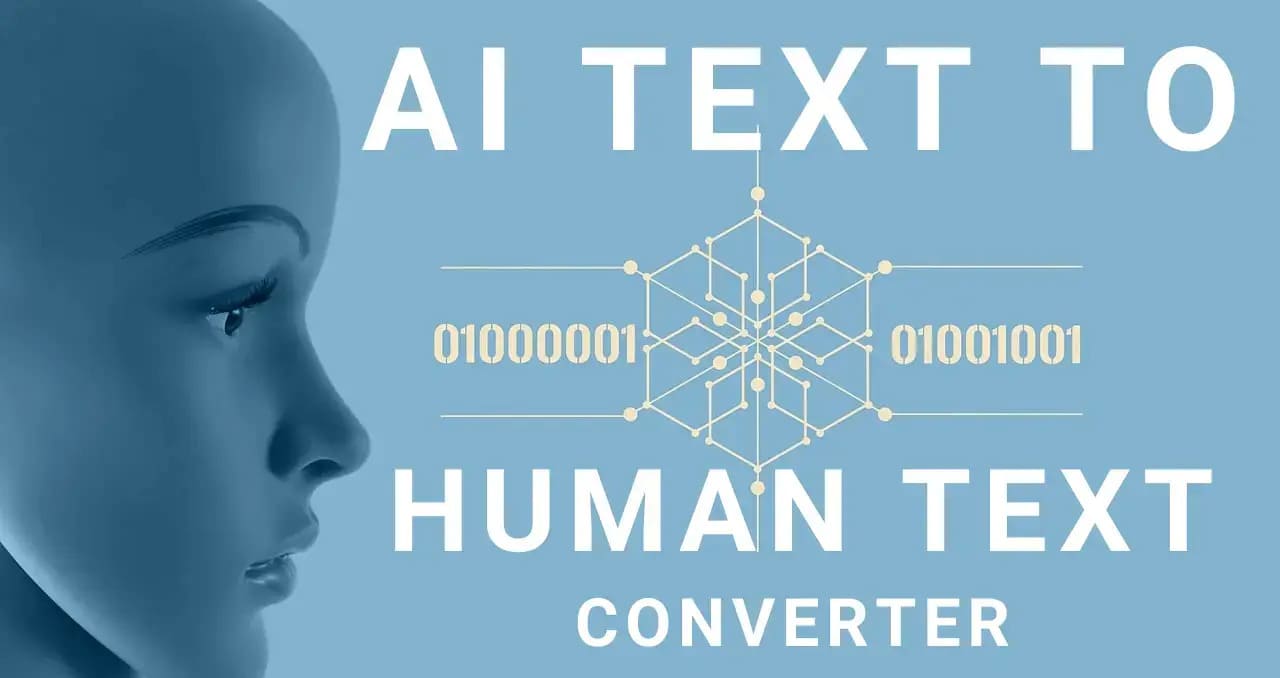Demystifying the Buzz: Understanding AI Text Conversion and its Impact
In today’s world dominated by information, artificial intelligence (AI) plays an increasingly significant role. One area where AI is making waves is in content creation. However, AI-generated text can often sound robotic and lack the natural flow of human-written content. This is where AI text conversion comes in.
What is AI Text Conversion?
AI text conversion, also known as humanization or natural language post-editing, is the process of transforming AI-generated text into writing that reads smoothly and naturally, resembling human-written content.
Why is AI Text Conversion Important?
There are several reasons why AI text conversion is gaining traction:
- Improved Readability: AI-generated text can be grammatically correct but often lacks the natural flow and nuance of human language. Conversion tools bridge this gap, making the content easier and more engaging for readers.
- Enhanced Credibility: Content that sounds human-written builds trust and credibility with the audience. This is crucial for businesses and individuals who want to establish themselves as reliable sources of information.
- SEO Optimization: Search engines often favor content that reads naturally and is engaging for users. AI text conversion helps optimize content for search engines by improving its readability and user experience.
How Does AI Text Conversion Work?
AI text conversion tools use various techniques to analyze and modify AI-generated text. These techniques may include:
- Grammatical and spelling correction: Fixing any errors in grammar, punctuation, and spelling.
- Sentence rephrasing: Rewriting sentences to improve clarity, flow, and conciseness.
- Vocabulary enrichment: Replacing overly technical or repetitive words with more natural and engaging language.
- Emotional tone adjustment: Modifying the tone of the text to suit the specific context and target audience.
The Future of AI Text Conversion:
As AI continues to evolve and play a bigger role in content creation, AI text conversion is expected to become even more sophisticated. These tools will likely become more efficient and nuanced, offering a seamless transition between AI-generated and human-written content.
However, it’s important to remember:
- AI text conversion tools are not a magic solution. They are valuable aids, but human oversight and editing remain crucial for ensuring high-quality content.
- Transparency is key. When using AI-generated content, clearly disclose its origin and any subsequent conversion processes to maintain reader trust and ethical practices.
AI text conversion offers exciting potential for bridging the gap between AI-generated and human-written content. By understanding its purpose, applications, and limitations, we can leverage this technology to create more engaging and impactful content while maintaining transparency and ethical considerations.
Convert AI text to human text
1. What is AI text conversion?
It’s the process of transforming AI-generated text into writing that reads smoothly and naturally, resembling human-written content. This is achieved through various techniques like grammar correction, sentence rephrasing, and vocabulary adjustments.
2. Why is AI text conversion important?
Improved readability: Makes AI-generated content easier and more engaging to read.
Enhanced credibility: Content sounds human-written, leading to better trust and credibility with the audience.
SEO optimization: Helps content rank higher in search results by improving its user experience.
3. How does AI text conversion work?
These tools use various techniques like:
Grammar and spelling correction: Fixing errors in the text.
Sentence rephrasing: Improving clarity and flow of sentences.
Vocabulary enrichment: Replacing technical terms with simpler and more natural language.
Emotional tone adjustment: Modifying the tone of the text to suit the context and audience.
4. What is the future of AI text conversion?
As AI advances, these tools are expected to become more sophisticated, offering a smoother transition between AI-generated and human-written content.
